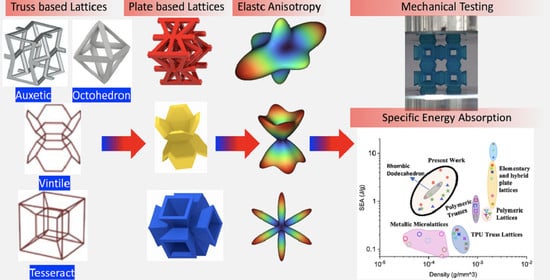Mechanical Properties and Energy Absorption Characteristics of Additively Manufactured Lightweight Novel Re-Entrant Plate-Based Lattice Structures
Abstract
Share and Cite
Al Hassanieh, S.; Alhantoobi, A.; Khan, K.A.; Khan, M.A. Mechanical Properties and Energy Absorption Characteristics of Additively Manufactured Lightweight Novel Re-Entrant Plate-Based Lattice Structures. Polymers 2021, 13, 3882. https://doi.org/10.3390/polym13223882
Al Hassanieh S, Alhantoobi A, Khan KA, Khan MA. Mechanical Properties and Energy Absorption Characteristics of Additively Manufactured Lightweight Novel Re-Entrant Plate-Based Lattice Structures. Polymers. 2021; 13(22):3882. https://doi.org/10.3390/polym13223882
Chicago/Turabian StyleAl Hassanieh, Sultan, Ahmed Alhantoobi, Kamran A. Khan, and Muhammad A. Khan. 2021. "Mechanical Properties and Energy Absorption Characteristics of Additively Manufactured Lightweight Novel Re-Entrant Plate-Based Lattice Structures" Polymers 13, no. 22: 3882. https://doi.org/10.3390/polym13223882
APA StyleAl Hassanieh, S., Alhantoobi, A., Khan, K. A., & Khan, M. A. (2021). Mechanical Properties and Energy Absorption Characteristics of Additively Manufactured Lightweight Novel Re-Entrant Plate-Based Lattice Structures. Polymers, 13(22), 3882. https://doi.org/10.3390/polym13223882






